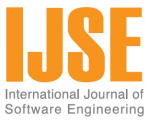Vol 7 No.1
Papers
ABSTRACT This paper has proposed novel weaving mechanism for Graph – semantic based Aspect Model called GAM. The GAM provides formal representation of Aspect Oriented System (AOS) concepts like join points, advices, PointCut etc. using graph based semantics. Moreover, GAM facilitates the aspect algebra which is comprised of set of operators defined on conceptual semantics of GAM. Those operators are used to conceptualize the different operations of cross cutting concerns in AOS design and also play a crucial role on realization of proposed weaving mechanism formally at model level. The proposed model level weaving mechanism is also capable to handle the cross-cutting issues related to static weaving, dynamic weaving and conflicts handling. The paper also demonstrates the expressiveness of the crosscutting operators of aspect algebra using several interesting properties in the context of AOS.
ABSTRACT In multiple execution paths compositions, can we generate solutions that simultaneously optimize all the execution paths, while meeting global QoS constraints imposed by the clients? This paper proposes a runtime path prediction method based on data mining techniqes. The method predicts, at runtime, the execution path that will be followed during the composition’s execution based on the information provided by composition requesters, making it possible to compute the optimization by considering only the predicted path. By using our method, it is expected to generate solutions that deliver the best possible QoS ratio, at the same time, minimize the violation of the global constraints. The proposed method is evaluated in terms of its prediction accuracy and scalability.
ABSTRACT In Software Engineering Regression Testing is a mandatory activity. Whenever, a change in existing system occurs and new version appears, the unchanged portions need to be regression tested for any resulting undesirable effects. During process of Regression Testing, same test cases are executed repeatedly for un-modified portion of software. This activity is an overhead and consumes huge resources and budget. To save time and resources, researches have proposed various techniques for Regression Test Suite Optimization. In this research regression test suites are minimized using three Computational Intelligence multi-objective techniques for black box testing methods. These include; 1- Multi-Objective Genetic Algorithms (MOGA), 2- Non-Dominated Sorting Genetic Algorithm (NSGA-II) and 3- Multi-Objective Particle Swarm Optimization (MOPSO). Said techniques are applied on two published case studies and through experimentation, the quality of these techniques is analyzed. Four quality metrics are defined to perform this analysis. The results of research show that MOGA is better for reducing the size and thus execution time of the regression test suites as compared to MOPSO and NSGA-II. It was also found that use of MOGA, NSGA-II and MOPSO are not safe for regression test suite optimization. This is because fault detection rate and requirement coverage is reduced after optimization of Regression Test Suites.
